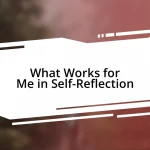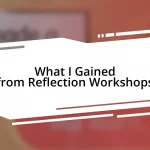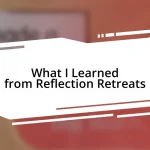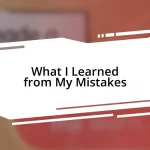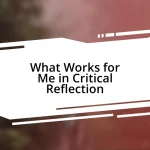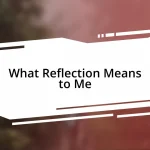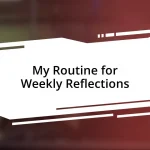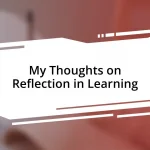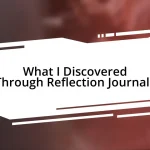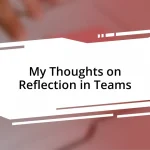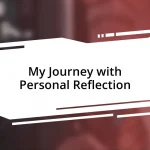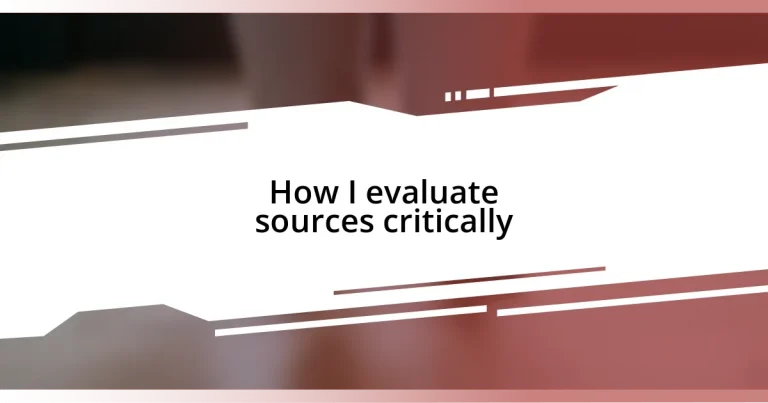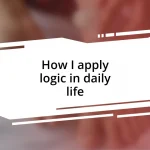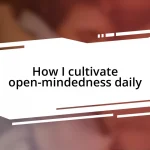Key takeaways:
- Understanding source evaluation is vital to distinguish credible information from misinformation and improve critical thinking skills.
- Key criteria for evaluating sources include authorship, publication date, and the intent behind the information.
- Cross-checking information across multiple reputable sources enhances confidence in the accuracy and reliability of the data.
- Recognizing bias and the author’s background is crucial for obtaining a balanced perspective and making informed judgments.
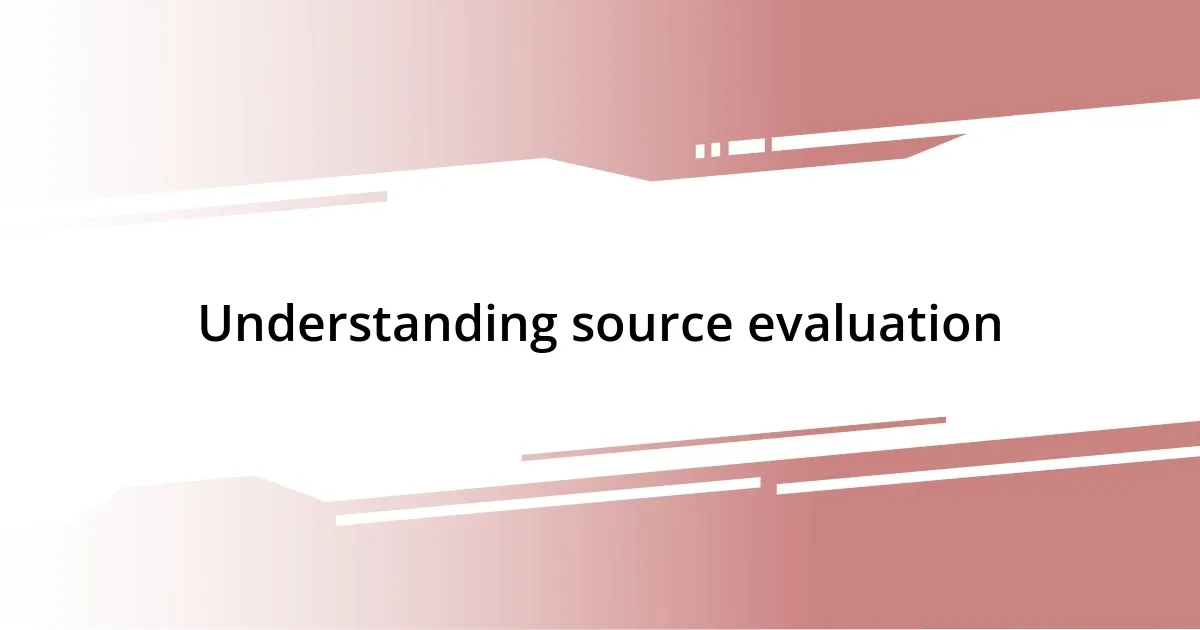
Understanding source evaluation
Understanding source evaluation is crucial in today’s information-rich world. I still remember a time when I stumbled upon an intriguing article that turned out to be riddled with inaccuracies. It taught me that just because something is compelling doesn’t mean it’s credible.
When evaluating a source, I often ask myself: “Who created this information, and what is their motivation?” This reflection helps me sift through bias and expertise. For instance, an article from a well-known university generally has more reliability than a random blog; however, I find it essential to look beyond credentials alone.
Emotional insights play a role too. I’ve learned that trust is hard to regain once lost, so I approach sources with a healthy dose of skepticism. Has a source made me feel a certain way? That’s a signal to dig deeper into their background. Ultimately, evaluating sources isn’t just about facts; it’s about understanding the bigger picture.
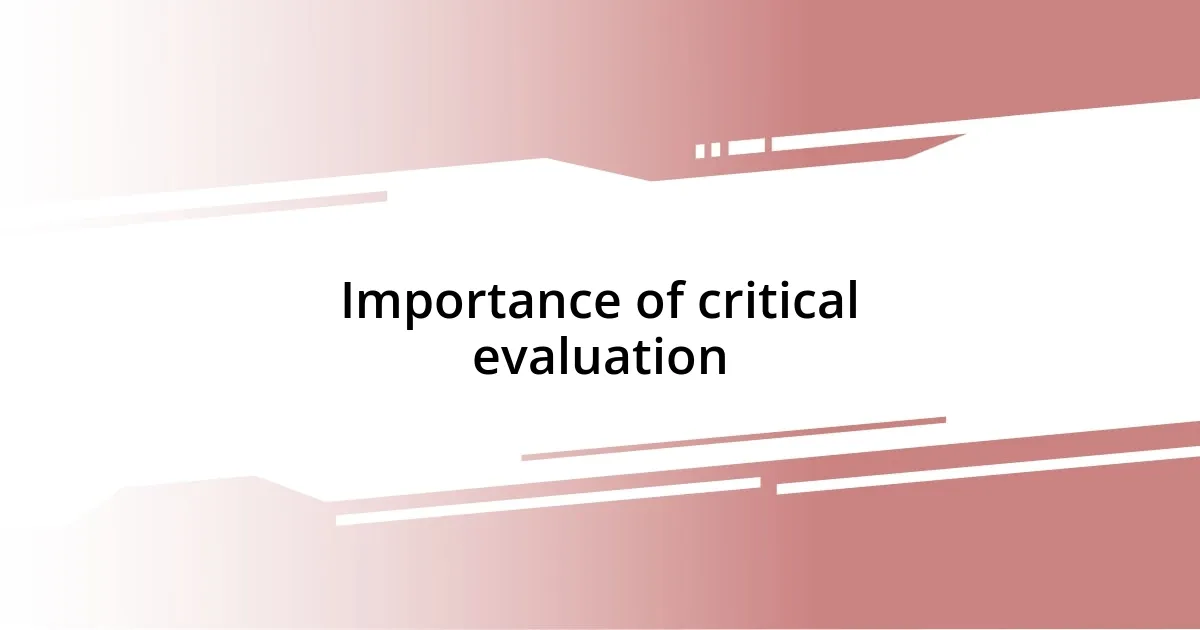
Importance of critical evaluation
When I reflect on the importance of critical evaluation, I often think back to a project I worked on in college. I thought I had found the perfect source, only to discover later that it was based on flawed data. That experience cemented in me the idea that evaluating sources isn’t just a task; it’s a vital skill that can significantly impact the quality of my work and understanding. It prevents the spread of misinformation and encourages a more informed dialogue in our increasingly complex world.
Here are a few key reasons why critical evaluation is essential:
- Establishes Credibility: It helps distinguish trustworthy information from falsehoods.
- Fosters Informed Decisions: A well-evaluated source can lead to better, more informed choices in research or everyday life.
- Cultivates Analytical Skills: Sharpening this ability enhances critical thinking, a valuable trait across disciplines.
- Encourages Open-Mindedness: Engaging with various perspectives can broaden one’s understanding and challenge preconceived notions.
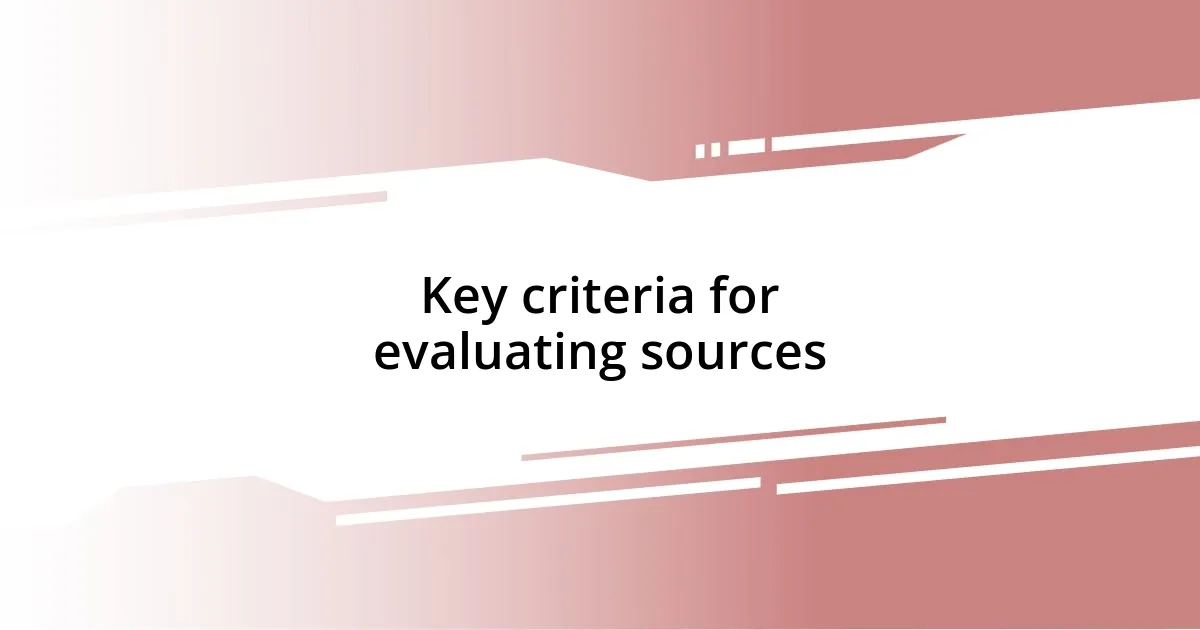
Key criteria for evaluating sources
When I evaluate sources, I often consider the author’s qualifications and background. I remember a particular research paper that I was tempted to use; it turned out the author had no relevant expertise. This experience taught me that just because a source looks professional doesn’t guarantee its accuracy.
Another crucial aspect is the publication date. I’ve been in situations where I relied on outdated information, thinking it was still relevant. It’s fascinating how quickly things can change, especially in science and technology. Ensuring the content is current helps me stay informed.
Finally, the purpose or intent behind the information can’t be overlooked. A news article that aims to inform differs greatly from one that seeks to persuade. I’ve found that identifying bias helps clarify the underlying motivations, guiding me toward making more informed research choices.
| Criteria | Description |
|---|---|
| Authorship | Consider the author’s qualifications, background, and expertise. |
| Publication Date | Ensure the information is current and relevant. |
| Purpose | Evaluate whether the source aims to inform or persuade, and identify potential biases. |
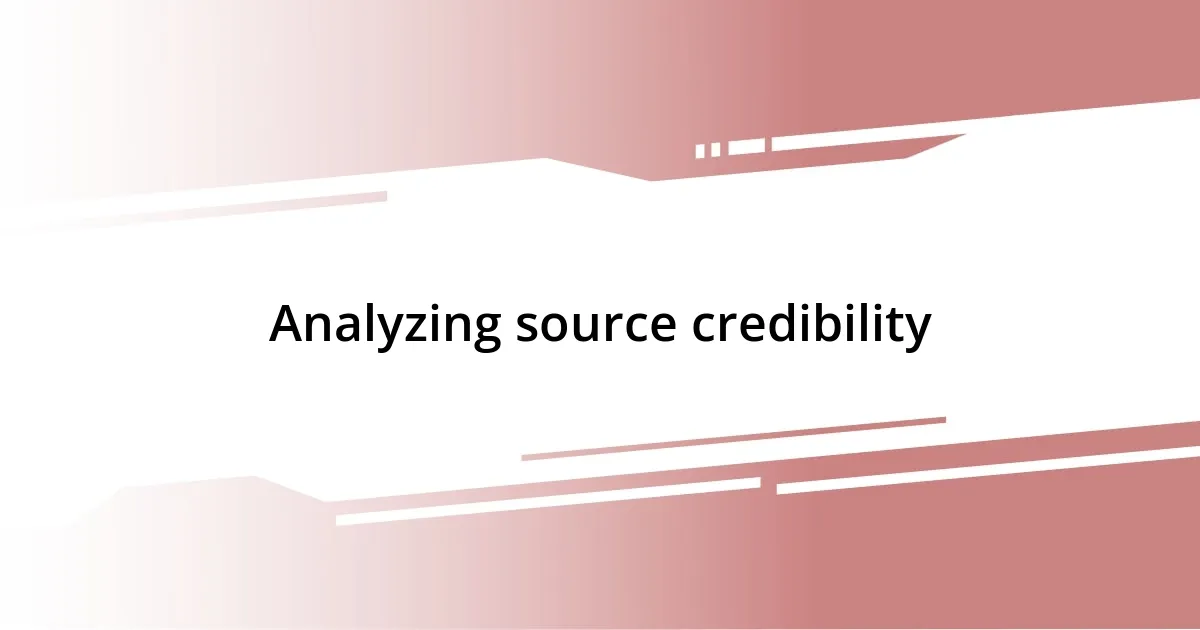
Analyzing source credibility
Analyzing source credibility is one of those tasks I’ve learned to approach with care. I remember a time when I stumbled upon a sensational article online that sparked my interest immediately, but a quick check revealed it was published on a site known for spreading conspiracy theories. The sheer realization of almost falling for it made me appreciate the importance of scrutinizing not just what I read, but where I read it. How often do we accept information at face value, without digging deeper into the origin?
One thing that really stands out to me is the importance of cross-checking information. There’s been instances where I encountered a claim that intrigued me, so I sought out multiple sources to verify it. It’s almost like a mini investigation; if I find consistent narratives across reputable platforms, I feel more confident in the validity of the information. But if the stories differ wildly, I know it’s time to tread carefully. This process not only boosts my understanding but also heightens my awareness of potential biases at play.
I’ve also learned to trust my instincts when reading a source. There have been moments where the writing style felt too emotional or one-sided, which raised my suspicions. It’s vital to consider the tone and language used, as they can reveal underlying motives. If it feels like a sales pitch instead of an informative piece, then that’s a red flag for me. In the end, analyzing credibility is about piecing together a puzzle; each bit of evidence helps me form a clearer picture of what’s true and what’s not. What about you? Have you ever found yourself in a similar situation, realizing that a little due diligence could have made a world of difference?
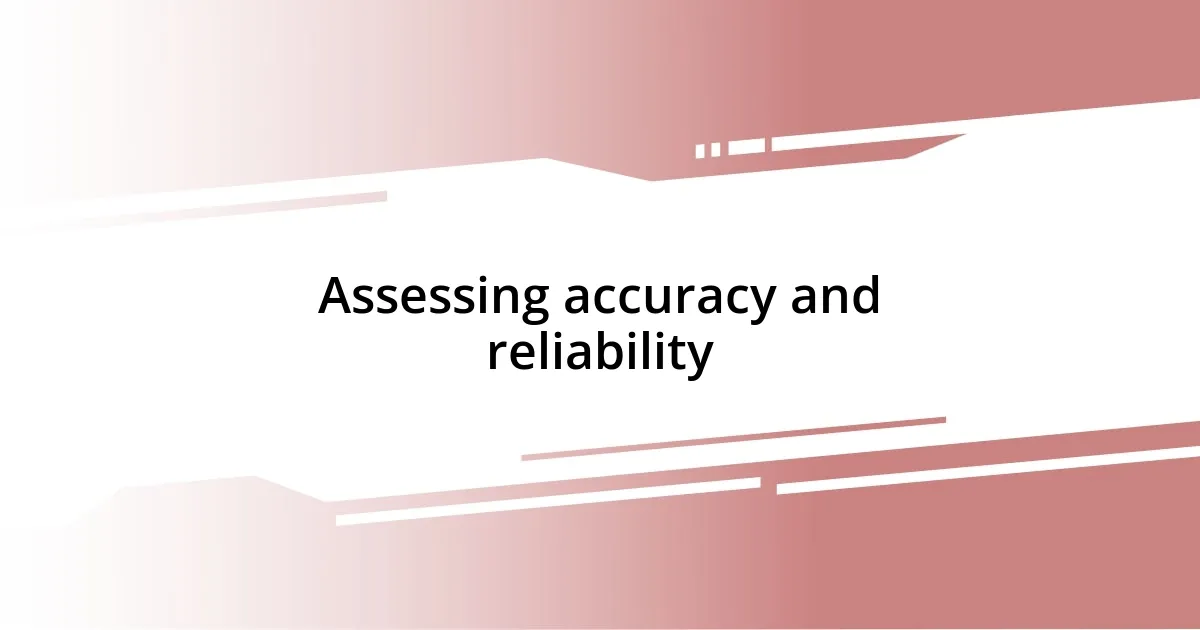
Assessing accuracy and reliability
When assessing accuracy and reliability, I always check the citations in the source. I recall a moment when I encountered a statistic in a blog post that seemed astonishing. However, upon tracing the sources referenced, I found that many were outdated studies or simply misrepresented findings. It’s essential to verify that the underlying data is not just quoted but accurately reflects current knowledge.
I also pay close attention to the source’s context. During a discussion about health advice, I once read a persuasive article that selectively presented evidence to support its claims. The omission of contradicting studies made me question its reliability. This experience stands out because I realized that what is not said can be just as telling as the information presented. Are you considering the full picture when evaluating a source?
Another point I consider is the peer-review process. I remember feeling secure when I picked a journal article that had undergone peer review; it’s like a safety net. The authors had to meet rigorous standards before publication, which gives me confidence that the findings have been scrutinized by experts. Reflecting on this, I often wonder how many novice researchers overlook the significance of peer review, which can genuinely impact the trustworthiness of the information they rely on.
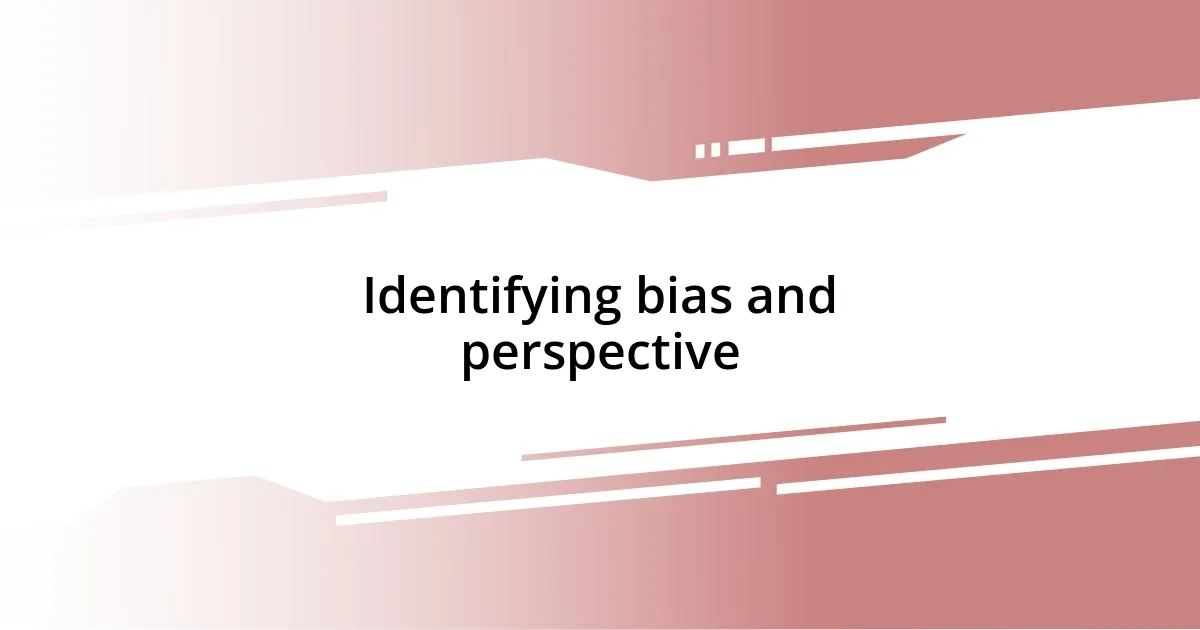
Identifying bias and perspective
When I think about identifying bias and perspective, it’s no surprise that the author’s background often plays a significant role in shaping their views. I recall an article written by a journalist who had a history in environmental activism. While it was clear she was passionate about her cause, the language she used was laden with emotionally charged words that painted a skewed picture. It made me question whether I was getting a balanced perspective, or just a rallying cry for change. How often do we find ourselves unaware of an author’s influences and motivations?
Moreover, I’ve come to realize that the choice of sources within an article can reveal a lot about bias. I remember reading a political piece that referenced studies from think tanks known for their particular affiliations. The lack of diverse viewpoints made the conclusions feel remarkably narrow. It struck me then how vital it is to recognize when a piece is cherry-picking evidence to support a specific agenda. Are you mindful of the variety of perspectives being presented in the sources you trust?
Sometimes, the visuals presented alongside an article can carry bias as well. I once encountered a report on economic issues that used stark imagery of struggling families paired with statistics about wealth gaps. While the visuals tugged at my heartstrings, I recognized that they could be manipulating the emotional response to reinforce a particular perspective. This reinforces the idea that bias can be woven into the fabric of a piece, beyond just the written words. It’s important to ask: are the images evoking my empathy or leading me to a predetermined conclusion?

Practical tips for source evaluation
When evaluating sources, I’ve learned to check the author’s qualifications and expertise. I remember stumbling upon a medical blog written by someone without formal training in healthcare, yet they claimed to offer vital health advice. This experience made me realize how critical it is to ensure that the author has the relevant credentials. Are you looking beyond the words to the person behind them?
Another effective strategy is to cross-reference information with multiple sources. I recall a time when I read about a new scientific breakthrough that seemed too sensational to be true. Curiosity drove me to check other reputable sources, and I discovered that the initial article had exaggerated findings. This taught me the importance of not taking a single source at face value—it’s much safer to confirm through diverse channels.
Lastly, I find it helpful to consider the publication date of a source. I encountered a well-written article about technological advancements that was several years old, which meant its insights were outdated. In our fast-paced world, relying on current information is essential, especially in areas like technology and medicine. How often do we unintentionally cling to outdated perspectives when more recent data is just a click away?

